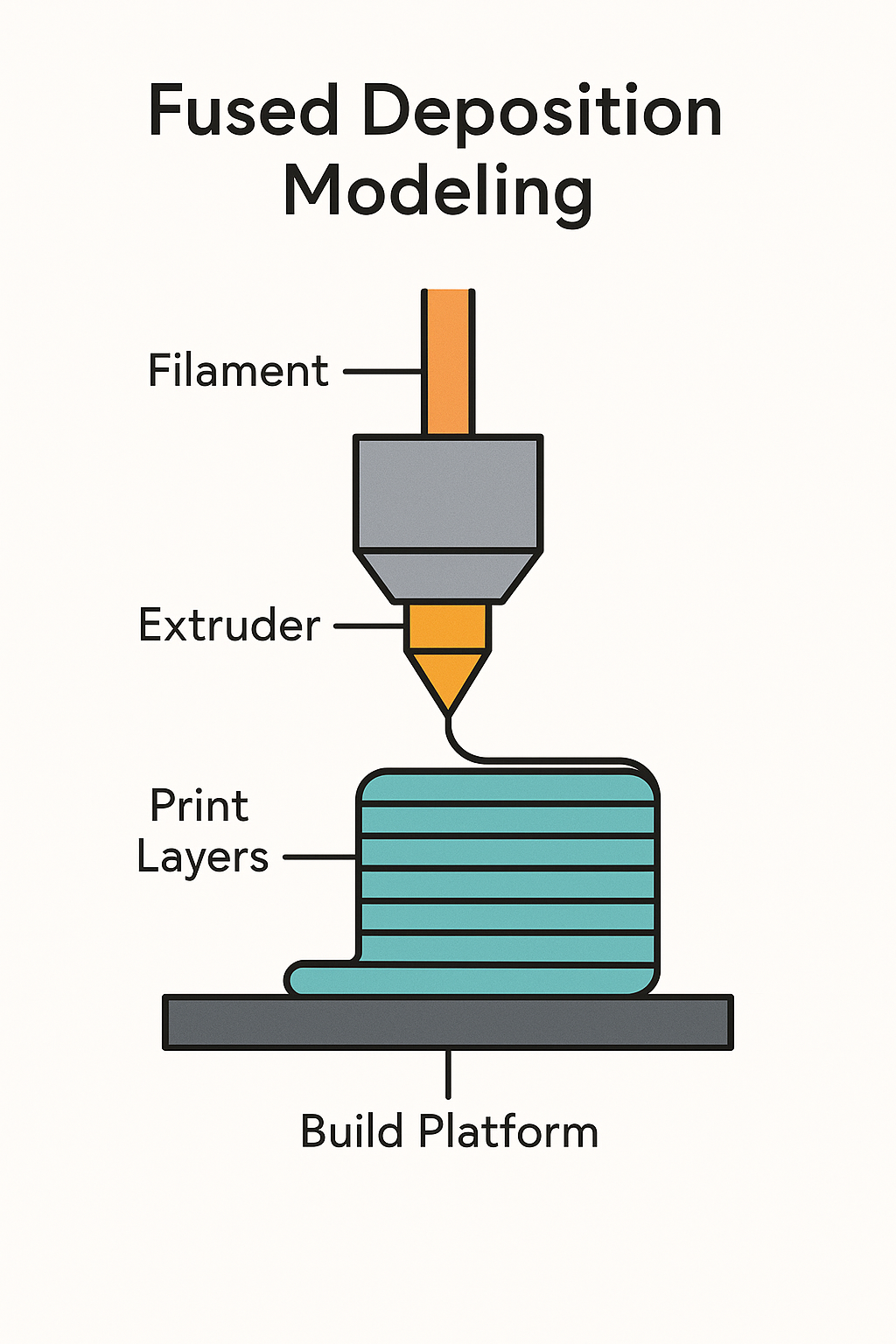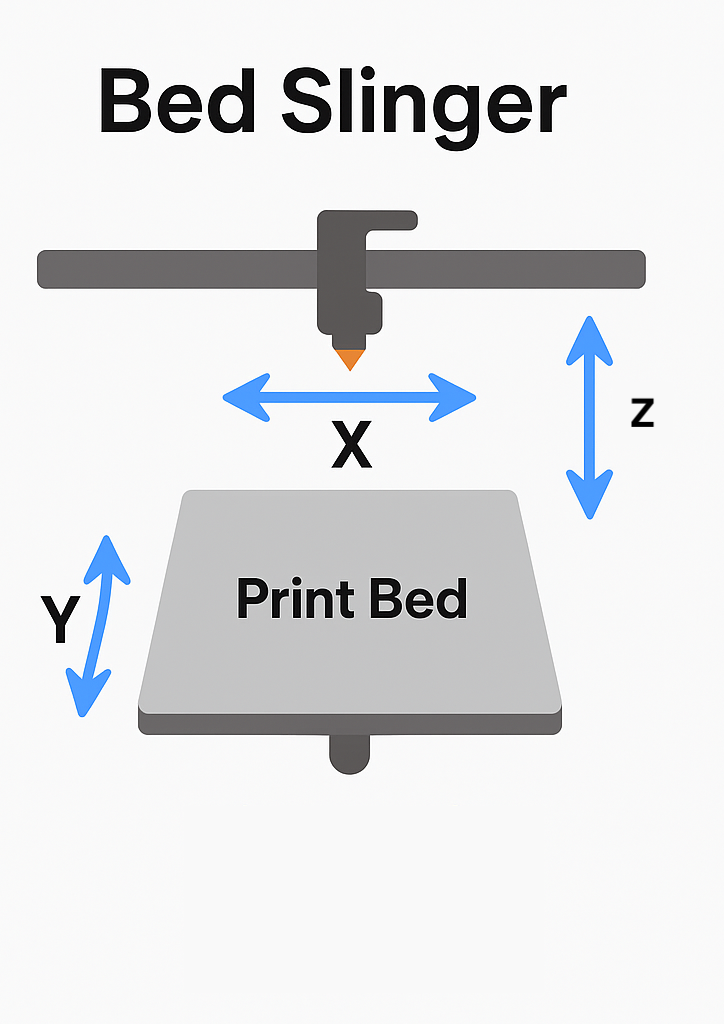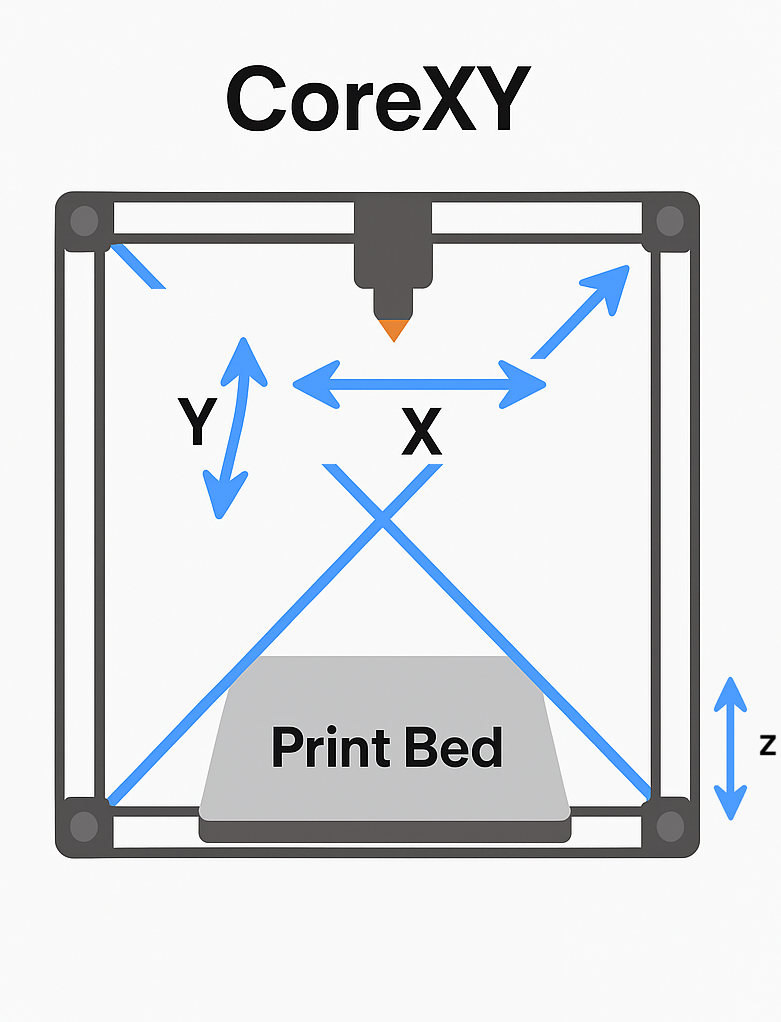Agenda
::: columns
:::: column 1. Intro 1. Types of Home 3D Printers 1. Finding Models to Print 1. Designing Your Own 1. Common Problems & Troubleshooting 1. Live Demo – Let’s print something! 1. Q&A
::::
:::: column
 ::::
::::
:::
Intro
- 1980s
- 2005 RepRap project by Adrian Bowyer
- 2010 Josef Prusa joined the RepRap project
- 2012 Josef Prusa founded Prusa 3D
- 2020 Bambu Lab founded by DJI engineers
- 2022 Bambu Lab release X1 (coreXY)
Types of Home 3D printer
::: columns
:::: column
Fused Deposition Modeling (FDM)
- Materials: PLA, PETG, TPU, ABS, PC, mixes with carbon fiber and glass fiber.
Pros:
- Low cost
- Easy to use
- Stronger mechanical parts (not PLA)
Cons:
- Lower resolution/detail (not suitable for tiny details)
- Warping/shrinking
::::
:::: column
 ::::
::::
:::
Types of Home 3D printer
::: columns
:::: column
Resin
Pros
- High resolution and detail
Cons
- Messy and toxic
- Smaller build volume
- Requires ventilation
::::
:::: column
 ::::
::::
:::
Types of Home 3D printer
::: columns
:::: column
Bed Slinger
Pros:
- Simple and cost-effective design
- Easy to understand and maintain
- Great for beginners
Cons:
- Wobble
- Slower printing speed
- Take up a lot of space
::::
:::: column

::::
:::
Types of Home 3D printer
::: columns
:::: column
CoreXY
Pros:
- Very stable at high speeds
- Compact footprint for the print volume
- Better quality printing for tall models
- Comes with enclosure (not all models)
Cons:
- High cost
- More complex mechanics
::::
:::: column
 ::::
::::
:::
Types of Home 3D printer
Which Brands?
- Prusa
- Bambu Lab
Finding Models to Print
- Prusa www.printables.com
- Bambu Lab makerworld.com
- Thangs thangs.com
- *Thingiverse thingiverse.com
Designing Your Own
::: columns
:::: column
Modeling softwares:
- Blender
- Fusion 360
- Tinkercad
- Freecad
- OpenSCAD
::::
:::: column
Types:
- Polygonal or mesh
- Parametric
- non-parametric
::::
:::
Common Problems & Troubleshooting
Even new printers can fail sometimes, you need to be ready for troubleshooting.
::: columns
:::: column
Common issues
- First layer not sticking
- Warping or curling
- Stringing or blobs
- Layer shifts
- Under-extrusion or clogs
::::
:::: column
Troubleshooting tips
- Wash the bed with dish soap
- For anything else than PLA, you need enclosure to avoid warping
- Keep the filament dry
- Bed leveling and nozzle distance
- Use of slicer preview to catch issues before printing
- Trial and error mindset—it's part of the fun
::::
:::
Where to start
Slicer Software Tutorials
Functional 3D Printing
More about materials